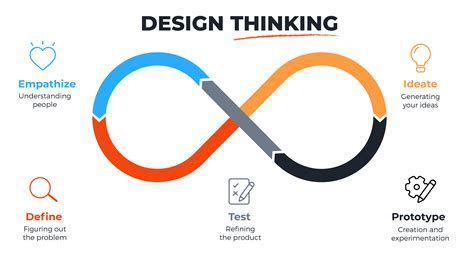Unleashing Innovation: The Power of Design Thinking
Introduction
Innovation has become the cornerstone of success in today’s rapidly evolving business landscape. Companies that are agile, adaptive, and capable of consistently generating creative solutions to complex problems tend to thrive. One of the methodologies that have gained immense popularity in fostering innovation is “Design Thinking.” In this blog, we will explore the concept of Design Thinking, its fundamental principles, and how it can be applied to drive innovation and problem-solving in management and business.
Understanding Design Thinking
Design Thinking is not just about aesthetics or product design; it is a holistic problem-solving approach that can be applied to various domains, including business management. At its core, Design Thinking is a human-centered, iterative process that seeks to understand the end-users, challenge assumptions, redefine problems, and create innovative solutions. It encourages empathy, creativity, and collaboration to tackle complex issues effectively.
The Key Principles of Design Thinking
- Empathize: The first step in Design Thinking is to deeply understand the perspectives and needs of the people you are designing for. This involves actively listening to customers, employees, or any stakeholders interested. Empathy helps in gaining valuable insights into the problem space.
- Define: After empathizing, it’s crucial to define the problem statement clearly and precisely. This step ensures that everyone involved has a shared understanding of the challenge at hand. It sets the stage for focused problem-solving.
- Ideate: Ideation is the phase of brainstorming and generating a wide range of potential solutions. There should be no judgment during this phase; the goal is to encourage creativity and free Thinking. Diverse perspectives are highly valued.
- Prototype: Prototyping involves creating tangible representations of potential solutions. These prototypes can be simple sketches, physical models, or digital simulations. The idea is to test and refine ideas in a low-risk environment quickly.
- Test: Testing is essential to gather feedback and refine the prototypes. This iterative process allows for continuous improvement. Testing also helps validate assumptions and ensure the final solution addresses the problem.

Applying Design Thinking in Management
Now, let’s explore how Design Thinking can be applied in the field of management and business:
- Enhancing Customer Experience: In today’s customer-centric world, understanding and meeting customer needs are paramount. Design Thinking can be employed to develop products, services, and processes that resonate with customers deeply. By empathizing with customers, businesses can create exceptional experiences that drive loyalty and growth.
- Solving Complex Problems: Business leaders often face multifaceted, ambiguous challenges. Design Thinking’s iterative approach helps break down complex problems into manageable components. Organizations can navigate uncertainty more effectively by reframing issues and ideating creative solutions.
- Fostering Innovation: Innovation is the lifeblood of competitive advantage. Companies that consistently innovate tend to outperform their peers. Design Thinking encourages a culture of innovation by empowering employees to think outside the box, experiment, and take calculated risks.
- Improving Employee Engagement: Engaged and motivated employees are likelier to contribute their best to an organization. Design Thinking can be applied to enhance the employee experience, from on-boarding and training to process improvement. Employees who feel heard and valued are more likely to be productive and innovative.
- Strategic Planning and Vision: Design Thinking can be employed in crafting organizational strategies and visions. By involving stakeholders in the process and empathizing with their concerns and aspirations, leaders can develop strategic plans that are not only visionary but also implementable.
Case Study: Apple Inc.
Apple Inc. is one of the most iconic examples of a company that has successfully embraced Design Thinking. Apple’s commitment to understanding and delighting its customers is evident from the sleek design of its products to the user-friendly interfaces.
- Empathy: Apple deeply understands its customers’ desires for elegant, user-friendly technology. This empathy is reflected in the intuitive nature of its products.
- Ideation: Apple encourages a culture of creativity and innovation, allowing employees to brainstorm and explore ideas without fear of failure. This has resulted in ground-breaking products like the iPhone and iPad.
- Prototyping and Testing: Apple’s iterative design process involves creating multiple prototypes and rigorously testing them. This ensures that products meet high standards of quality and functionality.
- Customer Feedback: Apple continuously listens to customer feedback to refine and improve its products. This ongoing dialogue with customers drives product development and enhancements.
Conclusion
Design Thinking is not a one-size-fits-all solution but a mind-set and toolkit that can be customized to various contexts. In the dynamic world of business and management, it offers a robust framework for innovation and problem-solving. Organizations can drive positive change and adapt to the ever-evolving landscape by focusing on empathy, creativity, and collaboration. So, whether you are a seasoned business leader or a student aspiring to enter the management world, embracing design Thinking can be your key to unlocking innovation and success.


Great insights on design thinking! Your practical examples really made the concepts click. Thanks for sharing!
Design thinking and its applications….A great insight…